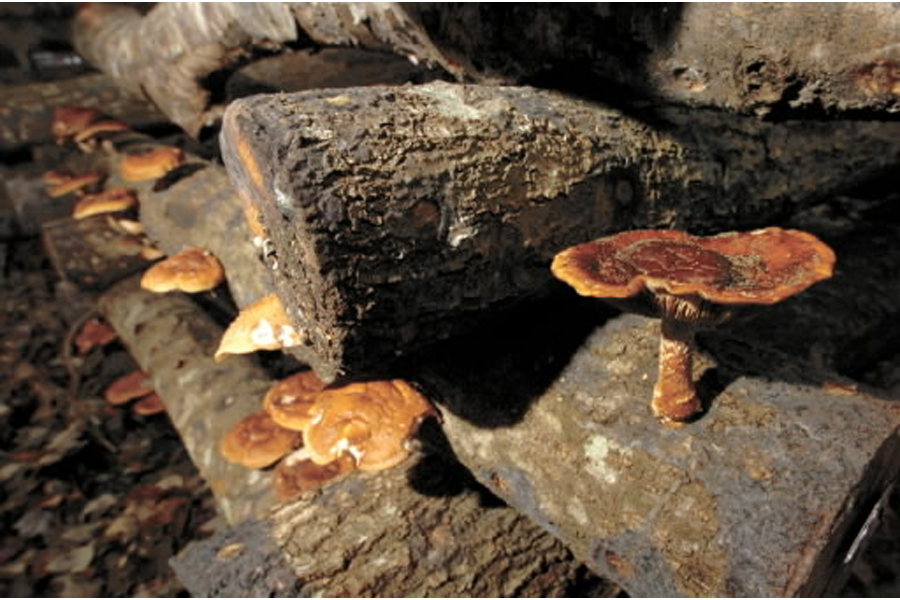'Future Library' – a forest that will become books 100 years from now
Loading...
Many artists will spend a long time perfecting a single piece of art. Even simple paintings can take weeks, months, or even years to complete.
Katie Paterson, however, has begun a project that outstrips most conventional art piece. Her latest work, "Future Library," will be a collaborative effort with authors that will span multiple generations. She does not expect to see the project come to completion in her lifetime.
"Future Library" is a forest of trees, now saplings, that will be cut down and made into books. The catch is, those books won't be published until 2114.
According to Hyperallergic, an arts blog, Paterson and her team have already planted 1,000 trees outside a city called Nordmarka, Norway. She and a group of publishers, authors, and other literary experts will form a panel called the Future Library Trust that will yearly pick an author to write a work of any kind for the Future Library. The manuscripts those authors then submit will be kept secret and stored away until 2114, when the trees will be taken down and made into paper for the books to be published on.
The Trust will be re-formed every ten years to ensure the continuation of the project, long after the original members are gone.
The highly ambitious and long-term project is a part of Slow Space Bjørvika, a public art program in the city of Oslo. The website describes Slow Space as a program "that will unfold over time, through collective activity, annual events and interventions, often in close collaboration with existing organisations and artist-run and activist initiatives across the city." The project aims to "challenge the conventional forms of public art" and was organized by the company Bjørvika Utvikling and the British art production group Situations.
Katie Paterson is an artist comfortable challenging convention.
Paterson was born in Scotland, but is currently based in Berlin. Her art frequently involves themes related to the passage of time. One of her pieces, for example, is "As the World Turns," a record which plays Antonio Vivaldi's "The Four Seasons" at the speed of a single revolution per day. Another work is "Timepieces," a series of clocks that tell the time on other planets in the solar system. She has also reforged meteorites, sent a piece of the moon around the world via commercial shipping, and chiseled down a grain of sand to an incredibly small size and buried it in the Sahara desert, according to her website.
A piece that will take a century to come to fruition, however, is a new challenge, even for her. In an interview with Hyperallergic, the artist described the significance of her latest undertaking.
"‘Future Library’ is a living, breathing, organic artwork, unfolding over 100 years. It will live and breathe through the material growth of the trees — I imagine the tree rings as chapters in a book. The unwritten words, year by year, activated, materialized. The visitor’s experience of being in the forest, changing over decades, being aware of the slow growth of the trees containing the writers’ ideas like an unseen energy — that’s something that has to come into being.”
According to the "Future Library" website, the artistic aim of the project is twofold: the ecological challenge to tend the forest for 100 years and ensure its preservation, and the creative challenge to produce literary works that will somehow find an audience in a future most authors will never see.
"‘Future Library’ has nature, the environment at its core — and involves ecology, the interconnectedness of things, those living now and still to come," said Paterson to Hyperallergic. "It questions the present tendency to think in short bursts of time, making decisions only for us living now.”
Ecological balance is already being taken into account for the project. Wood from the trees that have already been cleared from the site to make way for the saplings will be incorporated into a special room in an Oslo library that will hold the unread manuscripts for the next century.
The first writer to contribute a work to be published in 100 years will be selected this September. The author will hand over his or her manuscript in a ceremony sometime in 2015.
If you're feeling optimistic about your own lifespan, or just want your great-grandchildren to have some good reading material, Paterson has created a few limited edition certificates that entitle the owner a complete set of the texts. You can pick up the books anytime after they're printed in 2114.
Weston Williams is a Monitor contributor.








